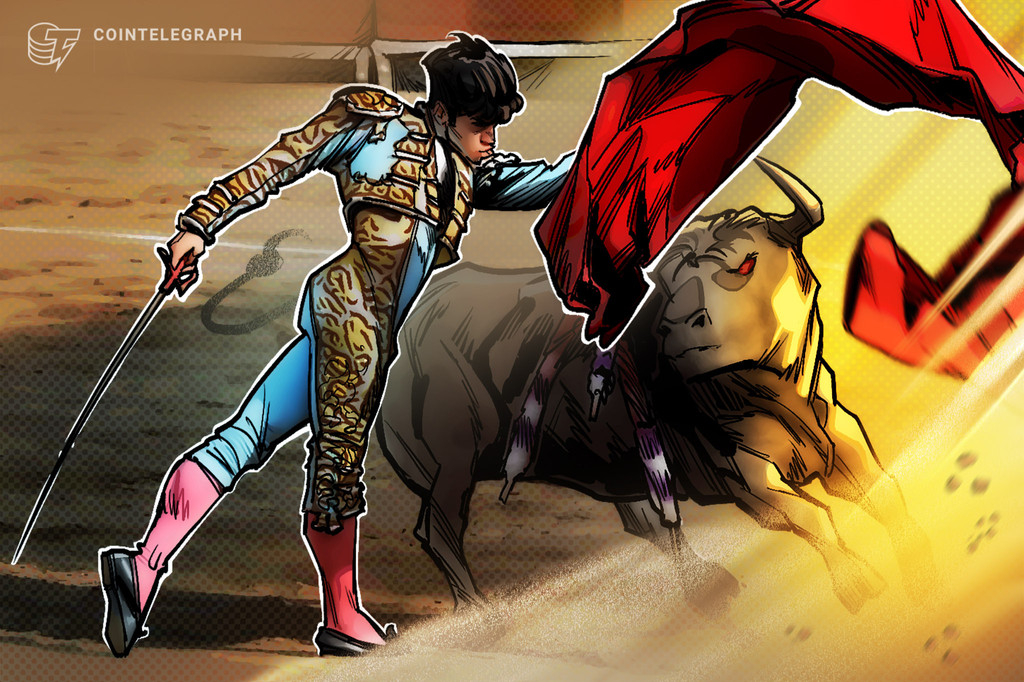Here’s how to spot a bull trap with some tell-tale indicators that one is on the way:
RSI divergence
A high RSI might be an indication of a potential bull or bear trap.
A relative strength index (RSI) calculation may be used to identify a possible bull or bear trap. The RSI is a technical indicator, which can help determine whether a stock or cryptocurrency asset is overbought, underbought or neither.
The RSI follows this formula:

The calculation generally covers 14-days, although it may also be applied to other timeframes. The period has no consequence in the calculation since it is removed in the formula.
In the instance of a probable bull trap, a high RSI and overbought circumstances suggest that selling pressure is increasing. Traders are eager to pocket their gains and will most probably close out the trade at any moment. As a result, the first breakout and uptrend may not be an indication of continuing price rises.
Lack of increase in volume
When the market is truly breaking out to the upside, there should be a noticeable increase in volume because more people are buying the security as it rallies higher.
If there is little or no increase in volume on the breakout, it’s a sign that there isn’t much interest in the security at that price and that the rally might not be sustainable.
A price rise without a significant increase may also probably be due to bots and retail traders jockeying for position.
Absence of momentum
When a stock experiences a sharp drop or gap-down with enormous red candles but then rebounds very gently, it’s an indication of a bull trap.
The natural tendency of the market is to move in cycles. When it reaches the top of a cycle, it is generally a period of consolidation as the bulls and bears battle it out for control.
This lack of momentum can be considered an early warning sign that the market is due for a reversal.
Lack of trend break
A decline in price is indicated by a sequence of lower lows and lower highs.
Trends in stock prices do not always change when advances are made. A downtrend is still intact as long as the price increase does not exceed the most recent lower high.
Lack of confirmation is one of the most frequent mistakes made by those caught in bull traps. They should already suspect that if the present high does not surpass the previous high, then it is in a downtrend or a range.
This is typically considered a “no man’s land,” one of the worst places to begin a purchase unless you have a good reason to do so.
Although some traders may be disappointed by this, most are better off waiting for confirmation and buying at a higher price than attempting to “get in early” and be trapped.
Re-testing of resistance level
The first indication of an approaching bull trap is a powerful bullish momentum maintained for a long time, but which reacts swiftly to a particular resistance zone.
When a stock has established itself as a strong uptrend with little bearish pressure, it implies that buyers are flooding in all of their resources.
However, when they reach a resistance level they’re unwilling or afraid to breach, the price will typically reverse before going even higher.
Suspiciously huge bullish candlestick
In the last stage of the trap, a huge bullish candle usually takes up most of the immediate candlesticks to the left.
This is generally a last-ditch effort by the bulls to take control of the market before the price reverses. It could also occur due to several other reasons:
- Big players are intentionally pushing the price higher to entice unsuspicious buyers.
- New investors are confident that a breakout has occurred, and begin purchasing again.
- Sellers intentionally let the buyers dominate the market for a short period, allowing sell limit orders above the resistance zone to be accepted.
Formation of a range
The final feature of a bull trap arrangement is that it creates a range-like pattern on the resistance level.
The price of an asset is said to bounce back and forth amid a support and resistance level when it fluctuates within a range.
Because the market might still be creating smaller, higher highs, this range may not be perfect, especially on the upper end. Yet the start of the bull trap is visible, as the huge candle previously stated forms and closes outside of this range.
